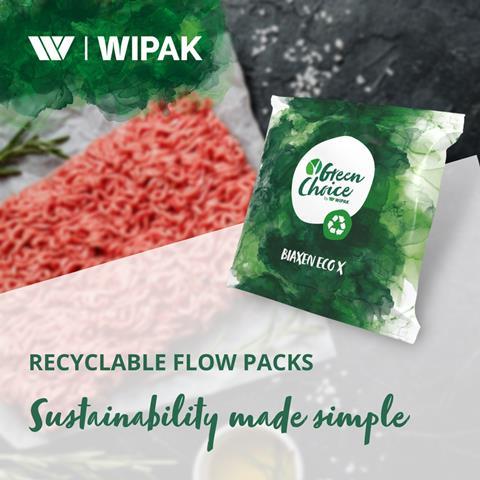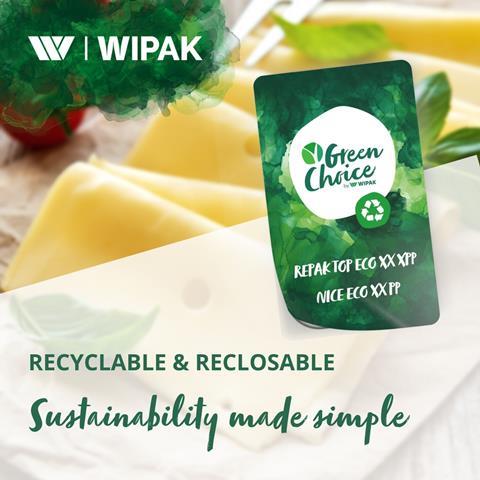
What is the importance of collaboration to packaging recyclability, what more can the value chain do to accelerate it, and what kinds of technical challenges must the industry overcome on this journey? We caught up with Susan Janssen, Sustainability and Sustainable Products Manager at Wipak, to find out more.
Broadly speaking, what is the importance of recyclability to Wipak, and how does it fit in with your overall sustainability mission?
Recycling is a shared challenge for producers and consumers, but we find it our responsibility to help in making responsible choice and the transition to recyclable packaging as easy as possible for producers and packers. Designing packaging for recycling enables it to be sorted and recycled properly as the valuable material it is, staying within the value chain as part of a circular economy.
How does collaborating with organisations like Ceflex help you in this journey?
We want to be the facilitators in contributing to a circular future, producing sustainable products that allow our customer’s customers, the end-consumers, to make sustainable decisions all the way from the store shelf to the collection point at the end-of-life of the packaging.
Therefore, we make sure all of our recyclable solutions are in alignment with recognised ‘Design for Recycling’ guidelines, such as the ones proposed by CEFLEX. Sharing a common sense along the value chain is essential to make the change happen, that’s what CEFLEX stands for, the collaboration and approach in working towards a common goal.
In your view, what more can the packaging value chain as a whole do to accelerate recyclability and recycling infrastructure?
We are proactively embracing sustainability issues as consumer demands and regulatory requirements multiply. A common target and approach is needed to increase recycling and to improve and innovate recycling infrastructure, or even develop it where it doesn’t exist yet. Apart from downgauging and recyclability, we all need to think in terms of solutions that are designed for purpose. Not overengineering, but keeping packaging balanced for the application and adapting the product safety to the required level of a packaged good.
Our GreenChoice sustainable products are designed with the circular economy as a guiding principle. Our mission is to make packaging more circular and for this we keep on striving for valuable collaborations with customers and partners, gathering the right knowledge and develop solutions together.

Could you drill down into some of your products, and give us some insights into some of the technical challenges that had to be addressed in the R&D process?
Recyclability is one of the biggest challenges of our era. Currently, the materials that are eligible for recycling in most countries need to fit the current infrastructure based on mechanical recycling. One of the challenges it that different infrastructure and preferences apply for different countries, even within Europe. The need for more recyclable solutions asks less complex film structures but at the same, not compromising on product safety, shelf-life and machinability. Especially the last one is a major topic to our R&D.
Packaging lines differ a lot and request a lot from the thin flexible films we produce. Keeping mechanical properties at a well-known level, without using common materials to enhance stiffness, which would make the film structure complex, is one of the key elements.
For example, vacuum packaging, typically made from multilayer structures containing PA and PE, having a high mechanical strength and puncture resistance. With our latest PE- or PP-based thermoformable films from our NFO ECO and SC ECO range, we can maintain the performance of the film and efficiency on the packaging lines of our customers.
Wipak’s recyclable portfolio offers solutions designed accordingly to recycling guidelines, with excellent performance and the smallest amount of material needed. Facilitating sustainable choices for the end consumer “Sustainability made Simple” is key for the transition towards responsible packaging. Therefore, we are continuously extending our recyclable packaging portfolio, allowing for more packaging being recovered via recycling.
What are your predictions for the future of recycled packaging, and how will Wipak fit into this?
Wipak is key player in the cross-value chain initiative HolyGrail 2.0, under the auspices of AIM. The objective of the Digital Watermarks Initiative HolyGrail 2.0 is to prove the viability of digital watermarking technologies for accurate sorting and the business case on a large scale. In the near future, digital watermarks will help consumers better sort their waste at home—providing all the information they need at their fingertips.
When the digitally watermarked packaging is collected and sorted, and after this sent for recycling, the system using a standard high-resolution camera will be able to detect and decode the watermark. Depending on the attributes communicated by the watermark, the packaging will then be automatically directed to the right sorting stream, allowing a more homogeneous stream and higher-quality recycled materials to get back into the value chain.
Wipak has successfully produced close to 8000 digital watermarked enhanced packaging concepts in the retail sector with partner, Digimarc®. As official Digimarc partners since 2018, Wipak has firm expertise in driving the next generation of digital identification and detection-based solutions that help customers drive efficiency, accuracy, and security across physical and digital supply chains.
The better the quality of recycled materials, which will be supported by new recycling technologies and cleaning steps as well, the higher the chance to really close the loop and recycle packaging back into packaging.










